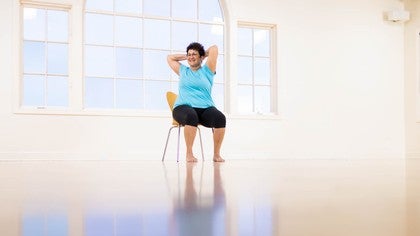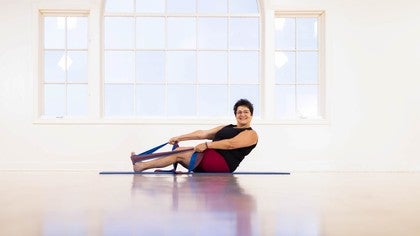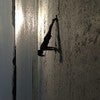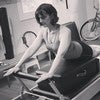Description
About This Video
Transcript
Read Full Transcript
This is a standing class. In this series here, we'll spend about 30 minutes or so doing various standing exercises that will incorporate pretty much the joints through our toes, feet, ankles, knees, hips, spine, ribs, shoulders, elbows, wrist, fingers. So in the standing class, people often wanna talk about posture, and what I really want you to understand is that posture is more than just standing up straight. It's more than just sucking it in and squeezing your bum and stuff like that. Posture is your ability to manage gravity and to create a relationship within your body to how your arms and legs move.
Now, in our body, we can move side to side, we can move front to back, and we also move in rotation. And the area in our body that needs the most information is in this rotation patterning, because that's walking, running, skipping. Any type of sport activity that you do, requires you to be able to rotate and feed your ribs, like I call it. So we'll start this exercise in standing and we'll stay in standing, again, for the whole time, and will start with the breath. Something very simple that we see is we just inhale up and exhale down.
So just do this with me, just kind of get used to it. Feel silly for a second. Like, "Oh, we're not doing anything," but then know that we really build to something. So my body, and these arms going up and down, we're gonna go like this. So we're gonna go inhale, two, three, four.
Turn your palms down. Exhale, two, three, four. Inhale, lift up the wind, lift up the air, lift up your lower belly, lift up your innards. Exhale, two, three, four. Again.
(Karen Sanzo exhales deeply) Breathe in through your nose, (inhales) out through your mouth, (exhales) or breathe in through your nose, out through your nose. (exhales) (Karen Sanzo exhales) Pause. Now we'll do it for five counts, okay? So now five counts. One, two, three, four, five. Turn your palms, push down, two, three, four, five. Your arms are gonna get tired.
Inhale. Invite the breath. Exhale. (exhales) Last time. Big inhale for five counts. (Karen Sanzo exhales) Rotation. Inhale. Push away. Exhale. Inhale, push away, exhale, all in five counts.
Inhale, exhale. Start to invite your lower body, inhale, to the left, press your right leg, exhale. One more time. Inhale to the right, push through your left leg, exhale, push back. And then last time, inhale, and then exhale, and then pause.
Circle the shoulders. Your shoulders are a part of the whole upper body system. We reverse it. And we talk about the blades, so now we start to reach like you're giving something to a friend, but then you're changing your mind and bringing it back. Reach and pull. Reach and pull.
Reach and pull. So why do we do this? Well, we're reaching, because we wanna start to get the trunk rotation. Now I want you to look straight ahead and push this arm way forward, way forward, and not turn your head, and then, when you're ready, reach and turn your head. Reach, don't turn your head, and then turn the head. Other side. Reach, reach.
Don't turn your head. Reach, reach, and then turn the head to the left, pressing into your right bottom. One more time. Reach, and then don't turn your head, and then reach more, and invite the head to rotate like a spiral, and then come all the way back to center. Now we start with a little leg motion, stepping side to side.
I know it's not a step aerobics class, but we wanna be light on our feet. And now, if this is okay for you, we start to talk about the heart rate a little bit in standing exercises. And then you can go step, step, step, step, 10 times. You can either step like this, right, or you can go one, two, three, four, five, six, seven, eight, nine, ten, rest, okay? Then you go front and back, front and back, front and back, front and back.
10, nine, eight, seven, six, five, four, three, two, one, rest. Two, three, one, two, three, four, five, six, seven, eight, nine, ten, rest. Other leg in front, two, three. Two more times. One, two, three, four, five, six, seven, eight, nine, 10, left leg in front, and release.
One more time, one, two, three, four, five, six, seven, eight, nine, 10, rest. Other leg in front, might be the left, might be the right. Step. So that just gets some breath going. Jumping is good for your heart rate. Your heart rate is good to go up in a class and then down.
Now we stop, legs about shoulder-width apart. (inhales sharply) Inhale, exhale. Now, when you breathe in, I want you to fill up your breath and then blow out your breath. (exhales) So after doing that jumping, you sometimes want to grip up, but we wanna do is we wanna fill (inhales) up. (exhales) One more time. (exhales deeply) Arms down by the side. Bend, up. Press your hands down so that when you press down with your palms, it actually invites the torso up. Bend, press, (inhales and exhales) inhale, exhale.
So you can think of this as bending your knees, but I would like to think of it as pressing my feet into the floor, and when I push the floor away, my legs happen to straighten, so that my leg information is always pressing down. One more time. Come all the way up. Relax your hands. Now, up on the balls of the feet. It takes a couple to kinda get yourself going.
It's okay to be wobbly. Remember, it's a relationship. We do not have to do perfect balance, perfect posture. We have to practice, up and down. What does the word practice mean?
So as you do these exercises, and we keep raising, I promise, you have to do lots of these, so that they get into your calves and then they talk to the back of your thighs and then it talks to the back of your bum. I'm just doing this with my hands to try to keep me a little bit balanced. So back to practice. What does the word practice mean? Practice means you get better over time. So if you don't practice this, we can't expect to get better.
We practice. Now, you're gonna put your right leg in front and your left leg in back, and we're gonna lift up and down, like this, with offset legs. Push down to lift up, down to lift up. Here's three and four and five and six. The back leg works harder, seven and eight, and nine and 10.
Switch legs. You should feel your calf and the back of your thigh. Two heels lifting, and two and three and four, and grow up, and six and seven, whole leg working, eight, back leg working harder, nine, and then one more time, 10. Stand in place, traveling up the knees to the hips. So in this movement here, I'm going to take my left leg and I'm going to dance it around my right leg.
So what this is essentially doing here, is making my left leg receive internal rotation, but I'm not moving the left leg. So I'm dancing my pelvis and my leg around that hip that is not moving. And then one more time. So this right leg is down. I'm dancing around that leg, making that motion come through the hip for any range of motion that it needs there.
Then I'm gonna do the other side. So we're gonna dance around my left leg, and if you feel a point of restriction, then of course you come back. You don't work through anything with pain. If it's hard and challenging, you give it some information and you keep it up. One more time, working around that hip, and then come back.
So that's hip internal rotation without actually doing internal rotation. Now, if you turn your toes together like this, and your knees in like this, and you bend your knees a little bit, this is hip internal rotation. My torso is upright, my spine not moving. I'm just gonna hold this a little bit, pressing the feet down, feeling hip internal rotation. Then I'm gonna come up, bring my feet parallel, and then I'm gonna turn my knees out, and this is external rotation.
So this is the back of my butt opening my knees out. So we hold this for a little bit. So this exercise, turned out, doesn't really come from your feet, although the feet are turned out. It really comes from the position of the hip. And then I come up and then I come back to center.
And now, in parallel, these are two feet facing straight ahead, sides of my feet facing straight ahead, and now we do this running where I'm gonna press weight on the ball of this right foot, come up and then down. So in this exercise, we do this actually on the reformer, is that I'm always pressing down with the balls of my feet. I talk a lot with my hands. I'm always pressing down with the balls of my feet, regardless of the heel that's lifted. So I'm not plopping, but I'm lifting lower, lifting lower, lift, lower.
I think my eyebrows are going up and down. Lift, lower, lift, lower. Can I do it faster? Maybe yes, maybe no. As you go faster, whoa, you challenge your balance, you come back.
Also, as you go faster, you start to add some rotation, happens automatically, and then rest right there. So there's some actions of the feet, the ankles, the knees, and the hips. Continuing down with the feet, we now curl the toes underneath. So now we round the front of the foot, we round the front of the foot, just stretch that front of the foot. This is so that if we ever work on our shins or our knees, that toe can be pointed backwards.
If I bend my other knee, it allows me to get down a little bit further, bending and then bending. Then the last action of our feet, we've already lifted the heels, now I'm gonna look down at my feet, be sure they're kind of side by side, and then I'm gonna lift one foot, up the other foot up. So these are feet raises, not just the toes gripping up, but the feet. If you try to lift both feet, sometimes that's a little bit challenging, and I want you to really resist arching your back, and maximize lifting the feet. So sometimes it's best to do this one, one foot at a time, because then you have a little more control of the foot, but you can certainly do lifting both up.
Let's get 10 in, switching. One, two, three, four. Heel presses down as the foot comes up. Yes, you feel the fronts and sides of your shins. Six, five, four, three, two, one, and rest.
Ooh, let's march that in place just a little bit. All right, so now, moving on with the legs a little bit more here, we're going to start to bend the knees, and the knee bend first talks to our thighs, and sideways it looks like this. So I'm not overly sticking my butt out. I'm not arching my back. My spine is maintaining in the same position, right?
So in this position here, I'm loading my thighs. I'm gonna put the majority of weight on the right side and hold that in my thigh and a little bit in my butt. And then this left leg is gonna go one and out, two and out, three, four, you're gonna get tired in your standing leg, five and six and seven and eight and nine and 10. Stand up. Bend and hold. Now we load the left leg, pressing into the floor.
Shin is forward, pressing the heel as well that ties into your butt. Here goes the right leg out and in. One, two, three, four, five, six, seven, eight, nine, 10, stand up. Of course you can do that exercise and not touch the ground and leave your leg off. That would make it a little bit harder.
Moving on now. Our feet, if you will, are on the face of a clock. Gonna bend the knees, hold the thighs, hold the bottom. Now, my left leg is gonna go 12 o'clock, one o'clock, well, because my clock is facing me. I think you could figure this out.
So one, two, three, four, five, six, five, four, three, two, one, center, stand. Bend, here comes the right leg, out, one, two, three, four, five, six, five, four, three, two, one, center, stand. Again, bend, hold the load. The lower you go, the more load you will have. More is not necessarily better, but you wanna go to the distance you feel challenged.
So now we're gonna go out and in. So it's gonna go out, in, out, in, out, in, out, in. Hold that load. Hold means control. One more, and stand up. Did you get the load?
(inhales deeply) Bend and hold the load. Now, all the weight goes on the left leg. And here we go, out, in, out, in. Press the foot on that standing leg to keep the load. Two more, last one straight back, and stand up.
Shake it out. Okay, those are loaders. Those are loaders for the thighs with the knee bent. We have one more loader with the thigh and the hip, and it's our curtsy. Sometimes you can go around the clock and do all those together. I like to do them separately, 'cause they're a little bit challenging.
All the weight is going on my right side. I'm gonna pick up this left leg and I'm gonna bring it all the way around behind me, and then I'm gonna bend both knees, gonna hold right there till I feel something on the outside of this right hip, and then this right hip is gonna push me back up to center, okay? Resist bending forward too far. Maximize your verticality to get the load in, whoa, (chuckles) to get the load in the hip. Press into that standing leg. Push up.
That's two. We're gonna do five. Over you go. Hold that load, hold it there. That's the curtsy part. Then you push to come back up. That's three. Here we go over, four.
Bend the knee, hold that load in that hip, and then come up. And then last time. (inhales) Woo-eee, I got the load. You got the load? We got the load. And then bring it on up. Left-sided, excuse me, right-sided load. Now take all your weight, put it in your left leg.
Okay, so as we get ready to do the curtsy, you take this leg behind you, you bend until you feel some, whoa, yeah, some load in that left leg, and then you have to push the foot to pull the hip. That's one. (inhales) Over, lower with control. We want this control, this deceleration. This control right here is maximizing the length of that muscle, so then I can contract it and power it up. That's only two.
Here we go. Here's three. Hold that load. Breathe. (inhales and exhales) I have to check in with my breath all the time. Hold that load, push, power, return. Here's four. Over you go. Bend and hold the load. Hold that load.
I'm gonna try to go a little further this time. Woo, I feel that, and then bring it on up. And then last time, we're gonna go over there and we're gonna hold that curtsy load. We're gonna hold it, feel how it's even given you some rotational forces in your trunk, and then bring it all the way back and rest right there. Don't hit stop. I know it's hard.
I know it's hard. Okay, so give your legs a little rest, shake them out a little bit. Pull your knee to your chest a little bit. Touch one leg, touch the other leg, touch it behind you. These are just little balance activities.
Catching my breath, getting ready. Couple in the front, couple behind. Not gonna do anything fancy, okay? We could do touch one in front, touch one in back, but we're not gonna do that. Moving on now, give legs a little break.
Okay, we're gonna do a diagonal reach and a pull. So what that's going to look like in standing here, is I'm gonna use this left side of my body, okay, and I'm going to reach on my right diagonal and I'm gonna push up on the ball of that left foot. And then I'm gonna, like I'm turning a doorknob, I'm gonna pull it back, and then I'm gonna sit back into that butt just that I did that curtsy on. And then I'm gonna power up, reach, rotate the arm, pull, sit back, load, push up, reach, rotate that arm, pull it down, sit back, reach, pull the arm, sit back, one more time, reach on the diagonal, pull all the way back, sit back. This left elbow is by your ribs.
Now I'm gonna start to turn. So now I'm gonna reach my right arm forward, and I'm turning. So I'm giving a major load on this standing left bottom, and then come up. Rest. Other side. My right arm, my right leg participating.
Reach, so the reach comes from this hip turning in, pushing off the ball of the foot. Your feet are your drivers, and then your hips of course help that, right? So we reach. We're gonna rotate that doorknob counterclockwise. Pull the elbow back til it's level with the ribs. Sit back.
Notice my spine really hasn't changed. Press power through the leg. Reach, rotate, (inhales) pull the arm, pull the ribs, invite the breath. (exhales) Three more. Reach, pull, twist, load the left bottom. Push and power, reach, twist, turn and hold.
One more time. Reach, rotate, turn, pull, hold. Now take your left arm, reach it in front of you, and really reach that right arm, that shoulder blade, giving something to your friend across the room. Really reach, reach, reach, and then bring yourself all the way up. Trunk rotations, those combined with the legs, working all that information there.
Leaving the legs out of it now for a little bit, switching to the arms by themselves. (inhales) So here's the arms up in the air. So I want you to create some resistance by making a fist, and you're just gonna pull your arms down like you're pulling something down or stretching a band, and then they go up. Inhale, (inhales) squeeze, and pull. The tension in your fist is a grip. It's not a neck.
Okay? It can be a smile, but it's not a neck. Reach, squeeze, pull down. So it's like these two elbow pieces are pushing down on something, not overly squeezing the shoulder blades together, not overly doing anything, just pulling down. You'll notice when I pull down that my elbows remain in 90 degrees. And then pull down. We got two more.
My eyes are looking straight ahead. My head is over my ribs. My ribs are over my pelvis, creating that relationship there to make nice room for my core. Now, holding arms here, guess what? Rotate. Notice my arms aren't leading the motion.
My trunk is being powered by my legs and my rotation muscles respond. (exhales) Reach, that left elbow forward. Come back. As I rotate to the left, my right elbow reaches forward. Woo, and then rest. A lot of times we let those arms get way far behind us and we forget to move the rotation in our trunk, so this next exercise will feel really good for that.
Two hands. Gonna give yourself a big hug. Put your left arm on top first. Try to meet your elbows in the center. As you do that, your shoulder blades come apart in the back of your body. We're resisting the urge to shrug our shoulders, but we are reaching the elbows forward, and then your bottom right elbow is pushing up into the top-left elbow.
Now, this upper part of our thoracic spine, right, the part by our shoulder blades towards our neck, those joints respond to flexion, I mean, excuse me, respond to rotation. So as I rotate my torso to the right, my left elbow reaches, left shoulder blade comes around. So this is like we just did, but this is really making you work deep in the center. Then we're gonna do side bends, and then side bends, and now watch this tricky part. We're gonna put it together.
Side bend right, round a little bit, rotate a little bit, come around, and then return, and then reverse. We're going to side bend to the left, roll around, come around, and then return. Relax your arms. Inhaling. (inhales) Exhaling. Now we'll switch the arm that's on top.
So now we'll take your right arm, reach it around, and the left arm is on the bottom. Pull the shoulder blades, right? Resist the urge to shrug your shoulders up from your neck, but instead find those arm muscles, so this bottom elbow on my left arm reaches, the top elbow on my right arm reaches, and we're just gonna go rotate. Let's try. Let's separate the legs a little bit. Have a little fun.
Don't make it jerky, but make it breathy. (Karen Sanzo inhales and exhales) Can you challenge that breath to go inhale, two, three, four, exhale, two, three, four? (Karen Sanzo inhales and exhales) (exhales) Legs come back to center, and then we go side bend, one direction, roll around, return. Side bend other direction. These are great movements for that upper part of the chest, because those allow us to always reach and rotate, which allows us a lot of space for our ribs, and that rib package over the pelvis is so important to move our arms.
I find that when people have restriction in the arm reaching over the head, that there's oftentimes restriction in the rib cage and in the breath. So I encourage you to try all those exercises to get your breath going, get your rotation going. Last part of this standing segment, we build our body into a hip hinge action, and then a squat, and then a lunge, and then a one leg bow, okay? So all these now are for our legs coming back to do a little leg action, leg burning. So that sounded weird, leg burning, but you know what I mean.
So first of all, hip hinge is my pelvis, is my knees are slightly bent. I'm rotating my pelvis over my torso, excuse me, my torso over my hips, and then I stand up. So if you watch my head first, my head is staying straight in line with my torso. My bottom goes back, gives a little stretch to the back of the hip, and then those back-of-the-hip muscles come up. This is your basic hinge action.
This is very spine-sparing, if you will, meaning that it's not a lot of challenges for the spine, because it's majorly, I mean, it's mainly a butt exercise. Okay, then we change to our a left leg forward, right leg back, and we start our lunges. Now, when we do lunges, not holding anything, let's just put a little weight into this front thigh, and you have to kind of sneak that right leg back until the knee bends. Let's just stay down here for a second. So this is about 90, about 90, and about 90 back there.
Now, to stand up, if you're not feeling super-duper strong in your legs, then lean on your hands or be near a chair or something, but when you stand up, use your legs to stand you up, because a lot of times what happens is, we try to use the spine to grip us up, and we don't wanna grip up. We wanna press down to lift up, okay? Even if you have to use your hands, press down to lift up. Let's get one more time on this side. So this is your front leg, butt, and thigh pulling you up to standing, okay?
So let's do the other leg now. So facing forward, it would look like this. So now this leg is in front. I come back. Go ahead and go down and stay down there first. So now, as you get organized in your trunk and you're like, "Oh my gosh, I hope I can get up," then put your hands down, press down into that leg, and then bring yourself up.
All right, so from the side, it looks like this, again. So we're gonna go down, bend, press up, stand, back and down, press up, and stand. Remember, we're pressing up, pulling ourselves up, not gripping our spine up. And of course, if you can't do any of those exercises, you just do a little baby bend, tiny bend, bend, stand, bend, stand. Still an important exercise, okay?
We have to start where we are to get to where we want to go. Couple more. Never underestimate the power of those feet, right? We did our toes, we did our ankles up and down, we did our heels up and down. All those are really important.
Now we're gonna combine some actions with the arms and the legs. Take it it to the side of the mat. We'll come over here to the right side of the mat, do a Pilates exercise here we call draw the sword. So your top leg is a little bit in front. Here's my two hands.
I'm gonna take my left hand like I'm pulling a little sword out of the side here, and take a giant step out to the left, hold that sideways lunge, and then reach the sword, and then take a giant step back. So if you need to do it in smaller steps, you, of course, can do it in smaller steps, but I'm gonna try to keep 'em in big steps. So I'm gonna big step, reach that sword, pull myself back, come in one more time. Reach, bend, hold, two legs tight, draw that sword, load my legs, load them strong, and then bring myself up. I'm gonna take a little step over to the other side and then draw the sword to the other side.
So standing tall, pressing feet down, big step out, lunge. Whoa, (laughs) big step out, lunge, hold that lunge, draw the sword, and then push it all the way back. Big step out, plant, lunge, back foot. I think I forgot my back foot on that last one. Gotta press both feet down.
Draw that sword out and then bring it all the way back. And then last one, burrow down on that outside leg, and then step and hold, draw the sword, reach, hold, and then pull yourself all the way back. So in this standing class, you'll see we've found relationships between toes, ankles, knees and hips and trunk, and I am surprised when I do standing work how much my feet have to come into play. So thank you for joining me for this standing class.
Begin Pilates: Pilates ABCs
Comments
You need to be a subscriber to post a comment.
Please Log In or Create an Account to start your free trial.















